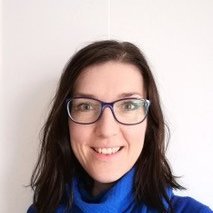Hylkje Geertsema joined ImPhys as tenure track Assistant Professor
From the 1st of March, Hylkje Geertsema started her tenure-track position within Imphys. Her position has a large focus on education and educational innovation in applied physics and nanobiology. At the same time, she will direct a small research group pursuing quantitative super-resolution microscopy on DNA replication proteins in human cells.
Biography Hylkje
After studying Medical Natural Sciences at the Vrije Universiteit in Amsterdam, she got interested in the ability to visualize the activity and dynamics of single proteins within protein complexes. As such, she did her PhD on single-molecule fluorescence studies on T7 DNA bacteriophage replication proteins, starting in 2010 at the Harvard Medical School, Boston, USA and finishing in 2014 at the Rijksuniversiteit of Groningen, the Netherlands. Afterwards, she wanted to push her knowledge and experimental toolset by investigating, on the one hand, more complex model organisms, i.e. eukaryotic cells, and, on the other hand, by increasing the resolving power of her technique by using super-resolution microscopy. As such, she did her Postdoc at the Freie Universitaet Berlin, Germany, on the application and improvement of the super-resolution technique DNA-PAINT to observe various structures in the nucleus of the eukaryotic cell.

Hylkje Geertsema
Her role within Imphys
From the 1st of March, she started her tenure-track position within Imphys. Her current position has a large focus on education and educational innovation, so she will mainly spend her time on teaching and how we can improve teaching, both for teachers and students, in applied physics and nanobiology. If you have questions or suggestions regarding the teaching within these programmes, she is happy to get into contact.
At the same time, she will direct a small research group pursuing quantitative super-resolution microscopy on DNA replication proteins in human cells. Questions we would like to address are how DNA replication proteins are distributed throughout the cell cycle and if there is dynamic exchange of single replication proteins within active replication machineries in human cells.